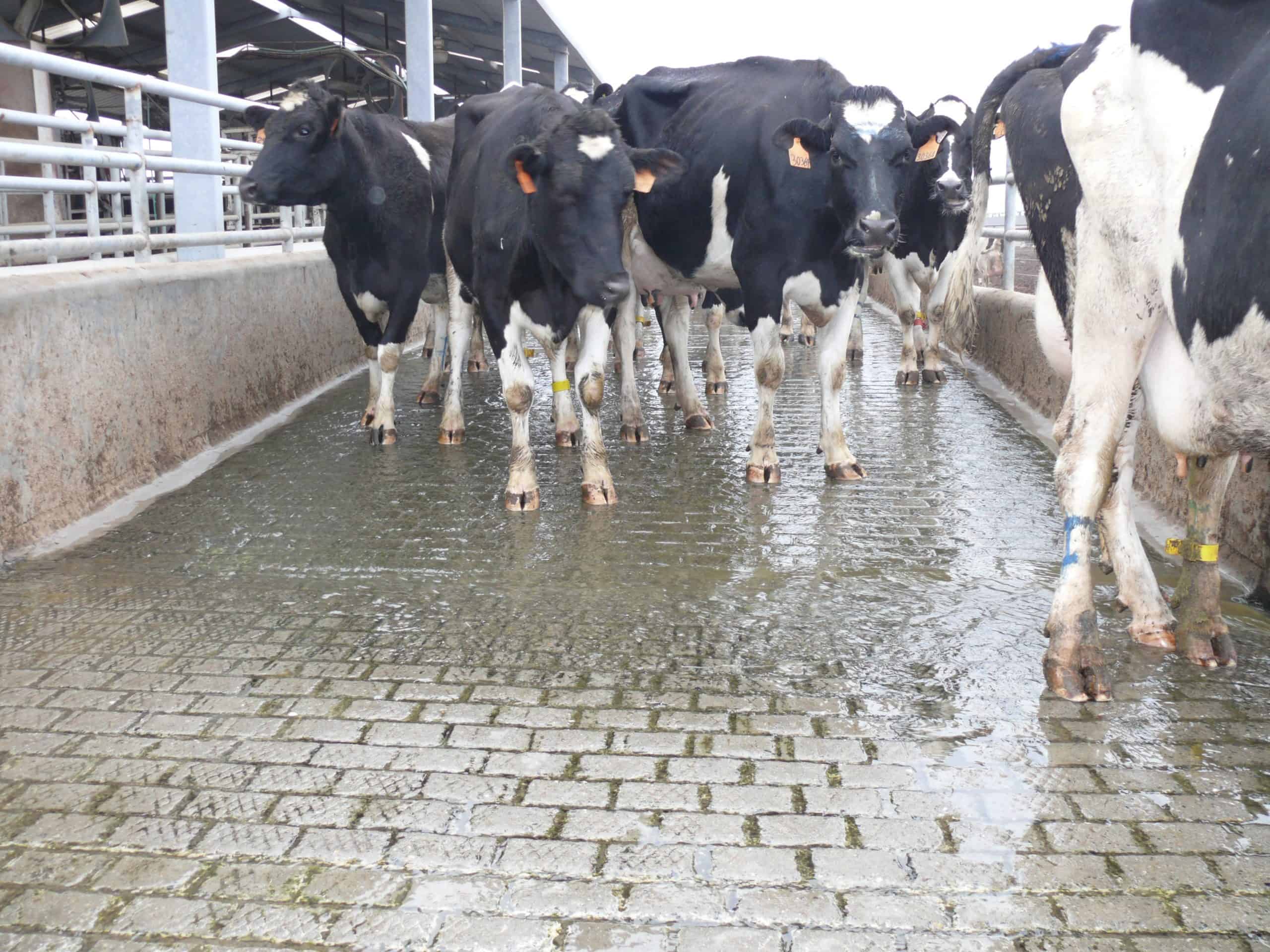
Limiting the spread and severity of digital dermatitis is a common concern for dairy producers. Digital dermatitis — also known as hairy heel warts or foot rot — typically affects confined dairy cows. Young animals and cows that have calved recently have been shown to be particularly vulnerable.1 The disease is also emerging in beef cattle on feedlots.
While copper sulfate footbaths are effective in reducing digital dermatitis outbreaks on dairies, copper sulfate is expensive and potentially toxic. Disposal typically involves mixing the metal with slurry and dumping into lagoons or on fields. The resulting build-up of copper sulfate in the soil over time poses a serious problem that is difficult to reverse. How, then, can producers shield their herds from this costly disease while minimizing copper usage?
Good hygiene practices can help prevent the disease from taking hold in your herd. Skin softened by wet conditions and contaminated with manure is easier for the bacteria that causes the disease to penetrate and infect. It follows that keeping hooves clean and dry helps reduce the occurrence of hairy heel warts in your herd.
Another method of prevention is to be more aware of potential cross-contamination. Hoof trimming equipment should be disinfected often, especially after contact with infected cattle or after use on farms with significant digital dermatitis problems. Boots that come into contact with slurry and mechanical parts that directly touch infected cows should also be disinfected before coming into contact with common areas or healthy animals. However, even operations with proper handling procedures and optimal hygiene standards can still be affected by the disease.
Dr. Nigel Cook, of the University of Wisconsin-Madison and creator of a widely-referenced hoof and leg hygiene scoring chart, recommends a footbathing interval based on current leg hygiene and stage of production. Dr. Cook recommends footbathing fresh cows more frequently, as these animals tend to be at a higher risk of contracting infectious hoof diseases, including digital dermatitis.2 Thus, while proper hygiene may reduce the frequency of footbathing programs, it is unlikely to replace them altogether.
Enhancing copper footbaths with additives is a simple way to limit the amount of copper disposed of on land. Additives can increase the potency of the solution, in some cases allowing producers to use up to 80 percent less copper in their footbaths.
These additives also resist pH change, which can help footbaths last longer in the presence of organic materials and allow the complete dissolution of copper sulfate for maximum bacteria-killing power. One study showed that copper sulfate additives can increase the number of cows treated by a single footbath from 300 to 600.3 This allows producers to use far smaller amounts of copper sulfate to treat more cows, significantly reducing their reliance on heavy metals and lowering the cost of treatment for each cow by up to 50 percent.4
Additives may help reduce copper usage, but for producers looking to eliminate all reliance on heavy metals, there are alternative mixtures to copper available. Some biodegradable footbath solutions can achieve results without the use of any heavy metals or formaldehyde.
For producers who need to reduce or altogether eliminate the use of expensive and toxic heavy metals in their footbath programs, there are several avenues to explore. Talk with your veterinarian about how to best handle your operation’s approach to digital dermatitis management.
Article originally appeared in Country Folks - Cattle Production Guide - Winter 2016 p. 10
1 Digital Dermatitis emerges in Beef Cattle. The Western Producer. August 7, 2014.
2 Hendrickson, Chip. Footbath Schedule for Your Dairy Cows. Hoof Health Solutions. February 23, 2016.
3 The Effect of HOOFMAX Acid Concentrate on the Viability of Bacteria Responsible for Foot Rot and Foot Warts in Dairy Cattle.
4 Ibid.